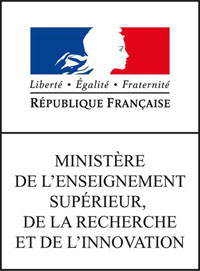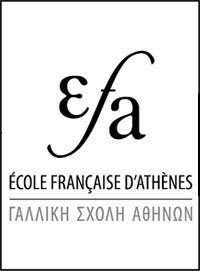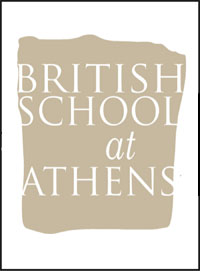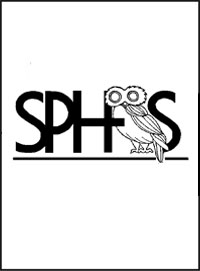Palamas, Karditsa - 2022
Informations Générales
Numéro de la notice
18583
Année de l'opération
2022
Chronologie
Mots-clés
Nature de l'opération
Institution(s)
Εφορεία Αρχαιοτήτων Καρδίτσας (Éphorie des antiquités de Karditsa)
Swedish Institute at Athens (SIA) (Institut suédois à Athènes)
Localisation
Toponyme
Palamas
Palamas
Notices et opérations liées
Description
Maria Vaïopoulou (Ephorate of Antiquities of Karditsa), Robin Rönnlund (Swedish Institute at Athens) and Fotini Tsiouka (Ephorate of Antiquities of Karditsa) report on the 2022 season of the Palamas Archaeological Project.
The season focussed on mapping, surveying and excavating a number of sites within the municipal unit of Palamas in the region of Karditsa, Thessaly. The work was divided into two field seasons, one in spring and one in late summer. The spring season focused on sites such as the ancient city at Vlochos and prehistoric magoules (mound-like structures) in the vicinity of Palamas. Geophysical surveys using magnetometry were carried out at three magoules (fig. 1), revealing indications of extensive land-modifications likely from the 20th century. Aerial photography was used to create digital topography models of the sites. The largest magoule, Magoula Gianiki, showed evidence of a Neolithic period construction, while the smaller magoule at Petromagoula and the recently discovered magoule near Paparma revealed ditches, embankments, and possible burned-out structures. At the ancient city of Vlochos, ground resistivity surveys were conducted, producing high-resolution results that depicted the city wall, towers, and internal structures of both the Classical-Hellenistic and Roman periods. Drone photography further revealed buried fortifications, towers, and structures at the site. Excavations at Strongilovouni focused on Trench 1, uncovering a 6th-century CE building with an earlier foundation and a destruction layer from the Hellenistic period. In Trench 2, cist tombs were discovered (fig. 2), possibly belonging to the later phases of habitation at the site. At the hill of Kourtikiano in Metamorfosi, the survey of fortifications continued, revealing an Early Byzantine fortification wall, towers, and structures. Pedestrian surveys on the hilltop identified concentrations of Archaic and Classical pottery, indicating domestic and industrial activities (fig.3). The project's findings shed light on the region's ancient and prehistoric history, emphasising the need for further study and excavation.
The season focussed on mapping, surveying and excavating a number of sites within the municipal unit of Palamas in the region of Karditsa, Thessaly. The work was divided into two field seasons, one in spring and one in late summer. The spring season focused on sites such as the ancient city at Vlochos and prehistoric magoules (mound-like structures) in the vicinity of Palamas. Geophysical surveys using magnetometry were carried out at three magoules (fig. 1), revealing indications of extensive land-modifications likely from the 20th century. Aerial photography was used to create digital topography models of the sites. The largest magoule, Magoula Gianiki, showed evidence of a Neolithic period construction, while the smaller magoule at Petromagoula and the recently discovered magoule near Paparma revealed ditches, embankments, and possible burned-out structures. At the ancient city of Vlochos, ground resistivity surveys were conducted, producing high-resolution results that depicted the city wall, towers, and internal structures of both the Classical-Hellenistic and Roman periods. Drone photography further revealed buried fortifications, towers, and structures at the site. Excavations at Strongilovouni focused on Trench 1, uncovering a 6th-century CE building with an earlier foundation and a destruction layer from the Hellenistic period. In Trench 2, cist tombs were discovered (fig. 2), possibly belonging to the later phases of habitation at the site. At the hill of Kourtikiano in Metamorfosi, the survey of fortifications continued, revealing an Early Byzantine fortification wall, towers, and structures. Pedestrian surveys on the hilltop identified concentrations of Archaic and Classical pottery, indicating domestic and industrial activities (fig.3). The project's findings shed light on the region's ancient and prehistoric history, emphasising the need for further study and excavation.
Auteur de la notice
Georgios Mouratidis
Références bibliographiques
Unpublished field report, SIA
Légende graphique :
![]() localisation de la fouille/de l'opération
localisation de la fouille/de l'opération
![]() localisation du toponyme
localisation du toponyme
![]() polygone du toponyme Chronique
polygone du toponyme Chronique
Fonctionnalités de la carte :
![]() sélectionner un autre fond de plan
sélectionner un autre fond de plan
![]() se rapprocher ou s'éloigner de la zone
se rapprocher ou s'éloigner de la zone
![]() afficher la carte en plein écran
afficher la carte en plein écran
Date de création
2023-08-07 10:59:07
Dernière modification
2023-12-08 11:16:29








